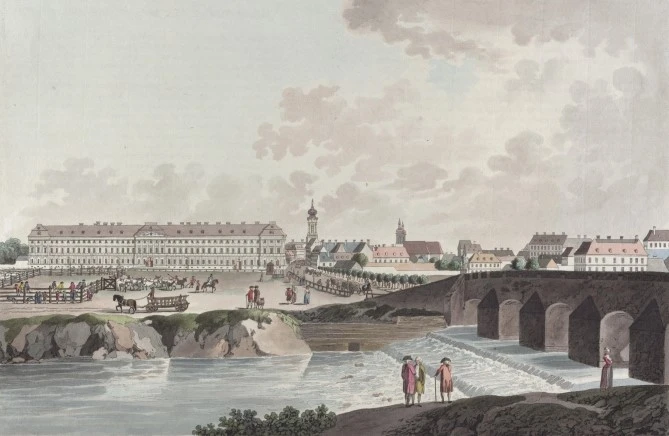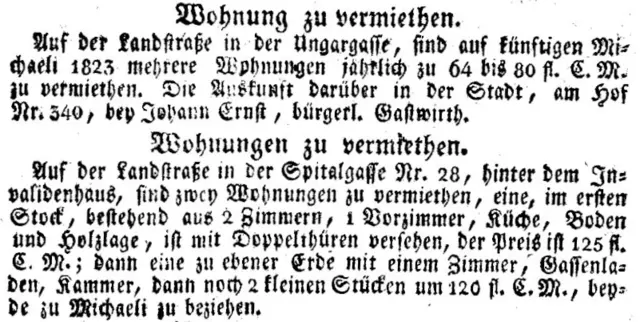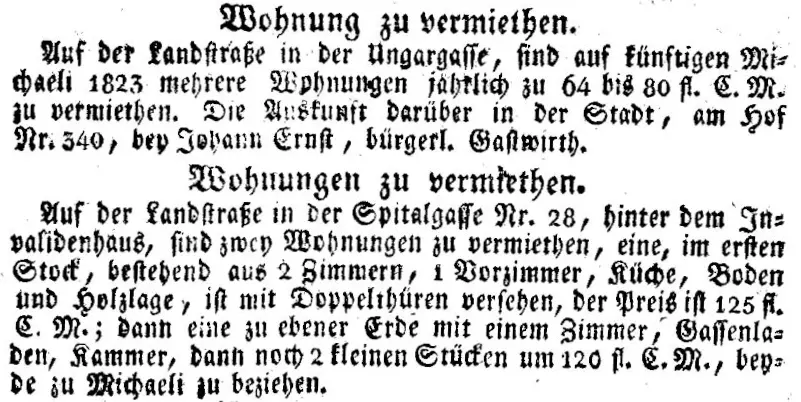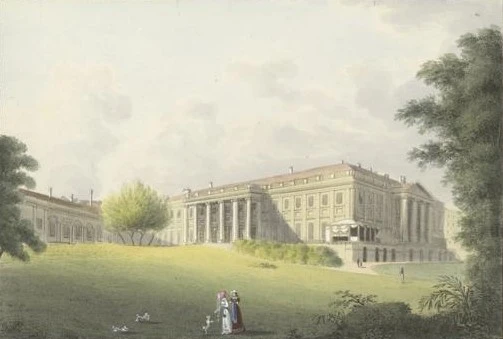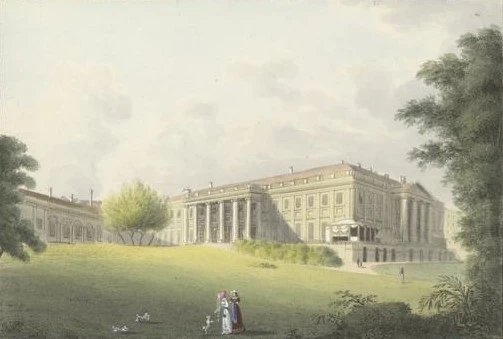“Over a number of years now, the police have been in a state of considerable despair during the periods when people need to vacate their accommodation (which, in these parts, correspond to the fourteen days after St George's Day and Michaelmas, respectively), as they struggle to put roofs over the heads of several hundred families from the poorer class, even in the furthest-flung of the towns and villages outside the city... To alleviate the shortage of housing, building has re-started all over the place… In the suburbs, some of the empty spaces adjacent to the Line Wall are being built upon. In some places, attractive, comfortable dwellings are being built where gardens, barns and stables used to stand.”
Johann Pezzl: Neue Skizze von Wien (New Sketch of Vienna), 1805, p. 9–10.
“The main street in this suburb is one of the widest in all Vienna, largely paved and, like the other two main thoroughfares… lined on both sides with palaces and outstanding buildings. The rest of the streets are similarly appointed, featuring beautiful houses and benefitting from ample lighting at night.”
Joseph von Fink: Der magistratische Vorstadt-Grund Landstraße (The Magistrate’s Suburb of Landstrasse), 1831, p. 5.


